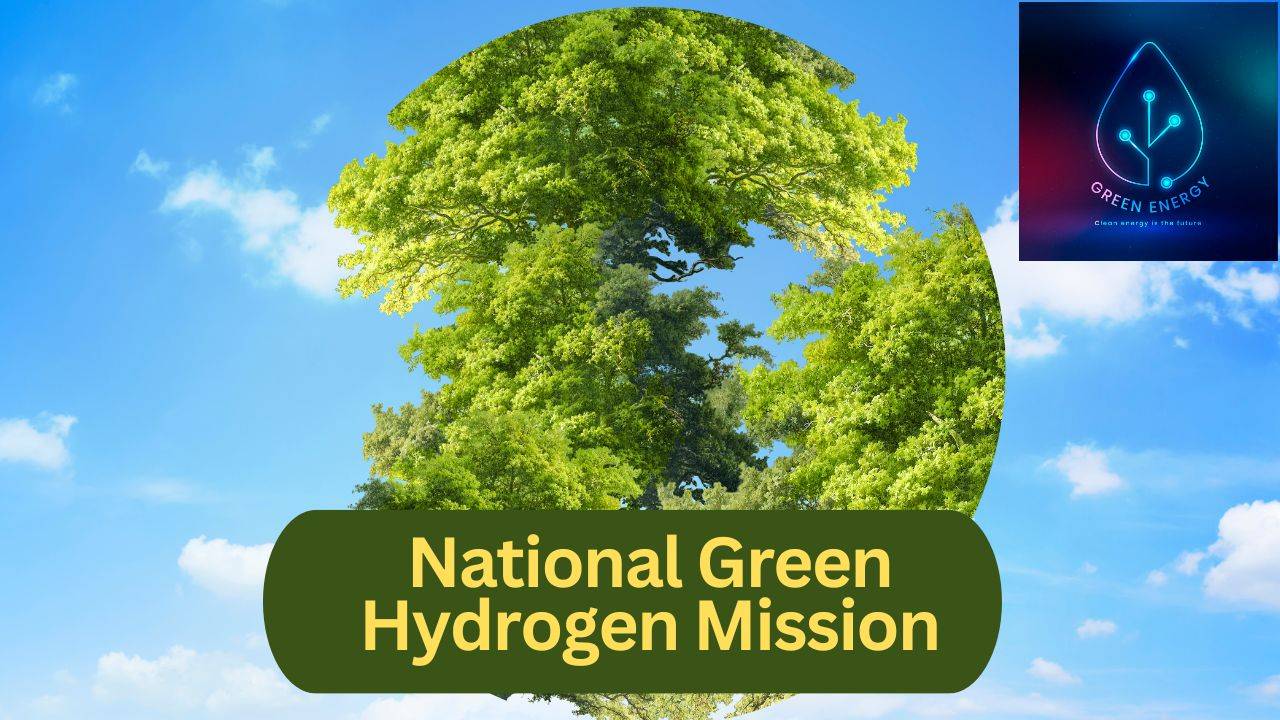
India has a vision of attaining energy self-sufficiency by 2047 and reaching a state of net-zero emissions by 2070. To realize these ambitious goals, the widespread adoption of renewable energy in every sector of the economy is at the core of India's energy transformation strategy. Green Hydrogen is seen as a promising solution to facilitate this transition.
Hydrogen holds the potential to serve as a means for storing renewable energy over extended periods, substituting fossil fuels in industrial processes, supporting clean transportation, and potentially even playing a role in decentralized electricity generation, aviation, and maritime transport.
National Green Hydrogen Mission Aims
The Union Cabinet granted its approval on January 4, 2022, to the National Green Hydrogen Mission, which aims to achieve the following key goals:
-
Establishing India as a global leader in the production and distribution of Green Hydrogen.
-
Generating export possibilities for Green Hydrogen and its related products.
-
Decreasing reliance on imported fossil fuels and raw materials.
-
Fostering the growth of domestic manufacturing capabilities.
-
Attracting investments and business prospects for the industry.
-
Generating job opportunities and fostering economic development.
-
Providing support for research and development initiatives.
National Green Hydrogen Mission Expected Outcomes
The anticipated achievements by the year 2030 include:
-
The establishment of a green hydrogen production capability of no less than 5 million metric tonnes annually, accompanied by an additional renewable energy capacity of approximately 125 gigawatts within the nation.
-
Total investments surpassing Rs. 8 lakh crore.
-
The generation of over 600,000 job opportunities.
-
A cumulative decrease in imports of fossil fuels exceeding Rs. 1 lakh crore.
-
The mitigation of roughly 50 million metric tonnes of annual greenhouse gas emissions.
Types Of Hydrogen
Hydrogen is classified into three main types based on how it's extracted:
-
Grey Hydrogen: This type is manufactured through methods such as coal or lignite gasification (resulting in black or brown hydrogen) or through a process called steam methane reformation (SMR) using natural gas or methane (resulting in grey hydrogen). These methods are typically associated with higher levels of carbon emissions.
-
Blue Hydrogen: Blue hydrogen is generated through natural gas or coal gasification, coupled with technologies like carbon capture storage (CCS) or carbon capture use (CCU) to reduce carbon emissions during production.
-
Green Hydrogen: Green hydrogen is produced by electrolyzing water using electricity generated from renewable energy sources. The environmental impact of green hydrogen production depends on how carbon-neutral the source of electricity is. In essence, the more renewable energy in the electricity mix, the "cleaner" or more environmentally friendly the resulting hydrogen.
World Hydrogen and Fuel Cell Day Celebrations Showcase The Importance of Hydrogen in Developing a Sustainable and Affluent Future
The Indian government, in collaboration with the Solar Energy Corporation of India Limited, marked World Hydrogen and Fuel Cell Day with a celebration in New Delhi on October 7, 2023. This event brought together experts in the field of hydrogen and introduced a Research and Development (R&D) Roadmap valued at Rs. 400 crores for the National Green Hydrogen Mission. The primary objective of this roadmap is to cultivate a robust research and development ecosystem to advance Green Hydrogen technology, facilitate its commercialization, and contribute to India's climate and energy objectives. It places a significant emphasis on driving innovations in materials, technologies, and infrastructure to enhance the efficiency, reliability, and cost-effectiveness of green hydrogen production, storage, and transportation, all while addressing technical challenges and safety concerns.
















